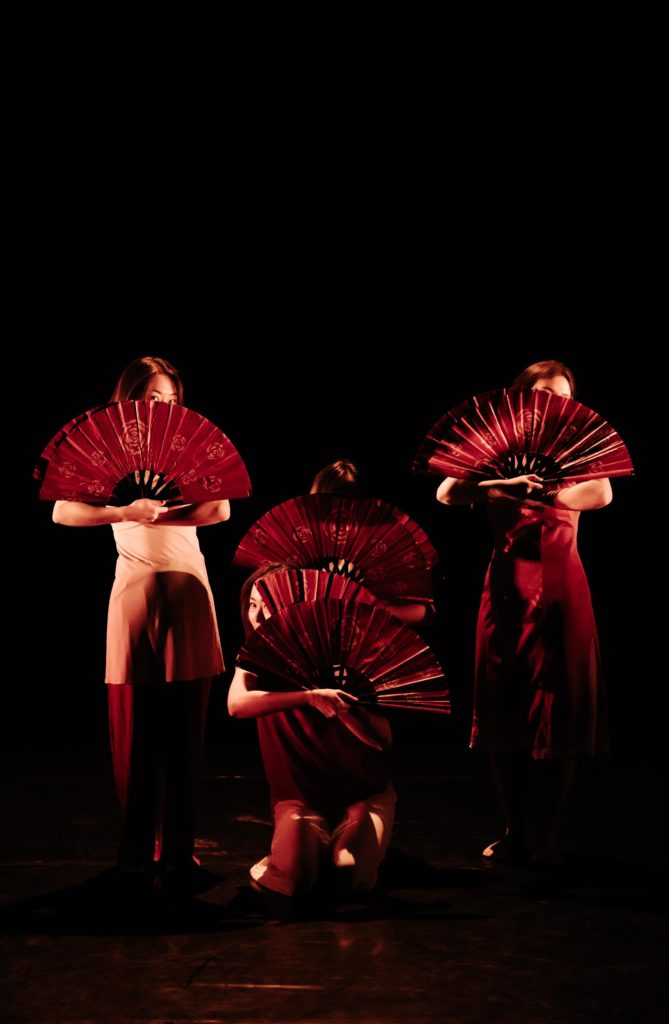When I was younger, my halmoni told me Korean folk stories from her childhood. One story in particular haunted me: Kumiho, the shapeshifting fox woman who lures men in with her beauty then uses her power to eat their hearts. The story always scared me, yet also fascinated me.
Now that I am older, I see Kumiho incorporates two primary tropes of Asian women: the Lotus Blossom (pure, innocent) and the Dragon Lady (cold, seductress), both of which describe women in relation to their desirability to men. However the tale also emphasizes how the kumiho spirit is also an outcast. Her outcast nature makes her a threat. Her outcast nature gives her power.
In 9 Tales of a Bitch, I lean into the space of the outcast in order to push back against stereotypical ideas of asian women. After emphasizing the stereotypes by participating in “frivolous” girls’ gossip and naive giggles, my performers then transform into cackling, open mouthed “bitches”— a term often slung at women who defy social norms. I incorporate large fans in reference to buchaechum (traditional Korean fan dance) to tell a modern story of Kumiho. Korean fan dance is performed by women and is mainly used as shamanistic ritual, historically practiced by outcast women. My performers begin by using the fans in expected, feminine ways – peeking out from behind them and using them to create beautiful circular patterns – only to then subvert expectations by using them more violently, stabbing and whipping, wielding them like weapons.
This performance challenges harmful stereotypes and cultural beliefs about Asian women, suggesting the power inherent outside of social norms.
Click on the image below for the research and process behind 9 Tales of a Bitch
